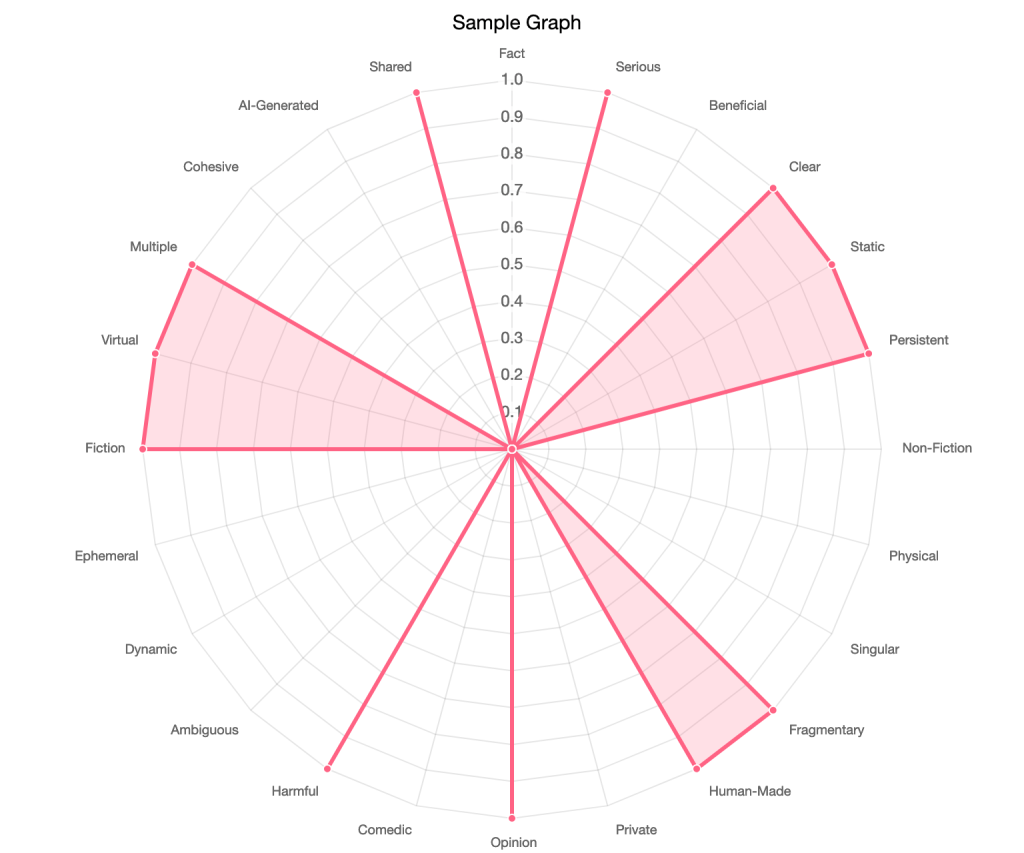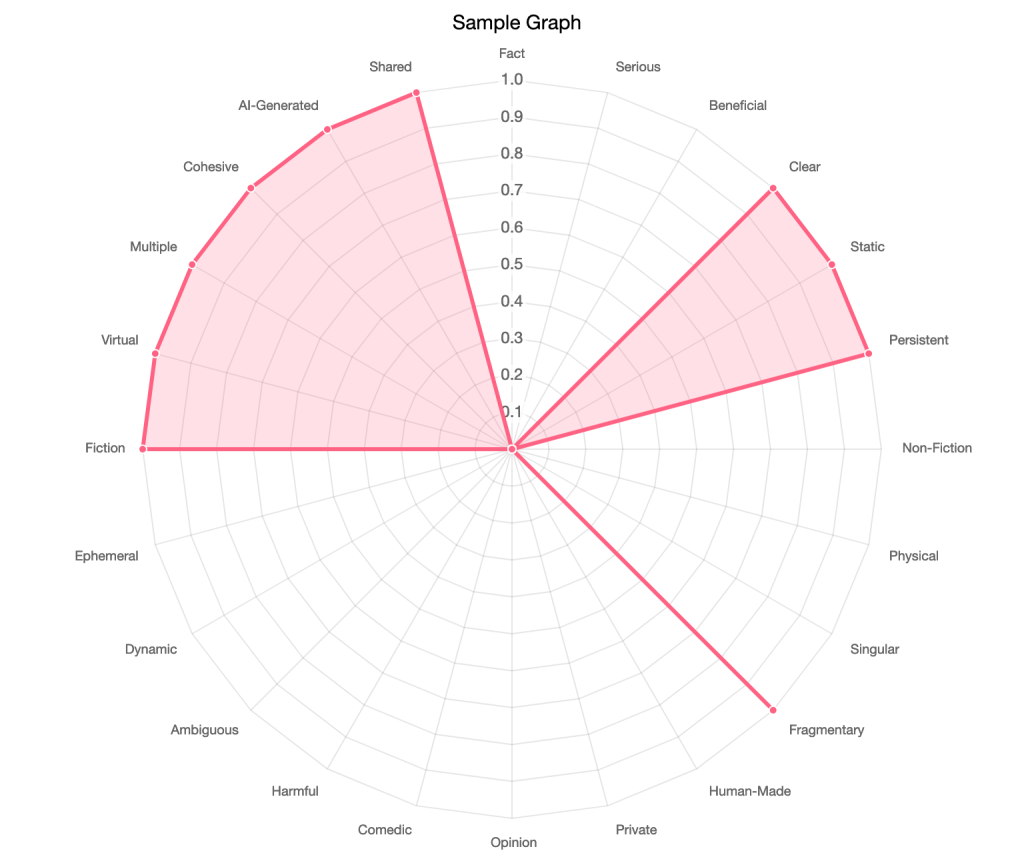Thinking more about the ramifications of shifting our analytical lens in the direction of hyperreality has got me wondering what this emerging discipline really ought to be called.
There’s a fair amount of cross-over with studying misinformation & disinformation, to be sure. But if we join that with the broader field of hyperreality, we see it’s not only that. There’s also a heavy cross-over with synthetic media, and deepfakes, but if you map the phenomenon to a more multi-dimensional chart, it’s easy to see that there’s more to the picture.
Here’s two sample graphs applying my provisional criteria (which I think need to be fine-tuned still). They use a simple 0 = none and 1 = some rating system to create imaginary profiles of two different pieces of content within this space.


I tried to make the one on the left match sort of the general outlines of a single piece of intentionally malicious disinformation. In this case, you could create that kind of content without using AI. So it might not be appropriate to lump it in with deepfakes or synthetic media, depending on your analytical objectives.
The one on the right is intended to just describe a set of AI-generated images, shared on social media. In this case, there’s no specific harm, and it’s not really expressing any specific opinion, etc.
This experiment of working up hypothetical profiles of content types is a useful one, though it makes it clear I need to tweak my data labels/dimensions/features under analysis probably.
In any event, it ends up being helpful to be able to quickly compare two different content type profiles. I can see that, okay, categories x,y,z probably are common to the vast majority of social media artifacts. And I probably am missing some other ones (a,b,c) that might help further distinguish meaningful differences… But it’s a quick V1 so I encourage others to take the best parts of this, and improve on it to fit better.
Circling back though, it’s clear to see that having a broader common framework lets us compare and contrast things across older categories in a possibly more holistic way… But I’m no closer to having a name for the approach as a whole: hyperreality studies? That doesn’t seem quite right, but at least it’s pretty neutral and doesn’t suggest any specific judgement about the object under study being good or bad, or whatever…

Leave a Reply
You must be logged in to post a comment.